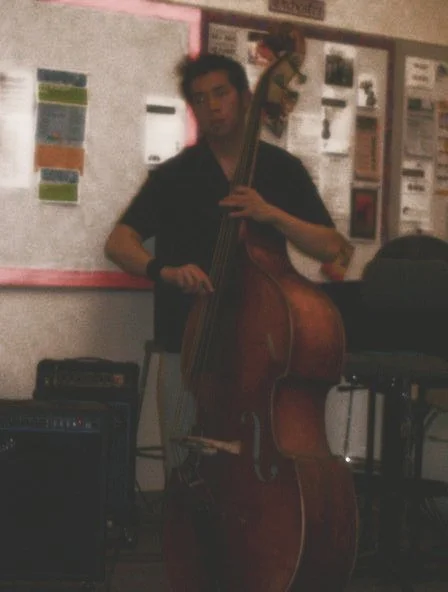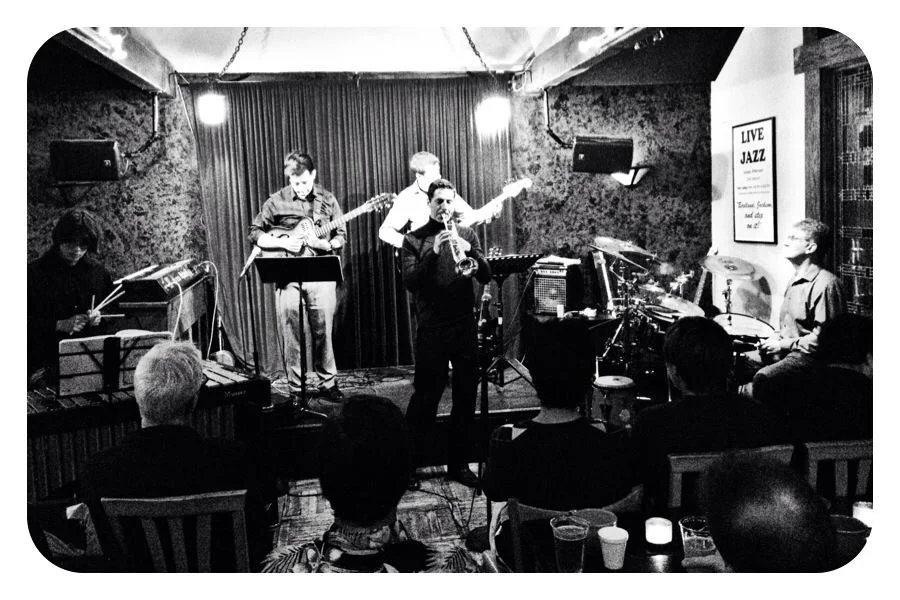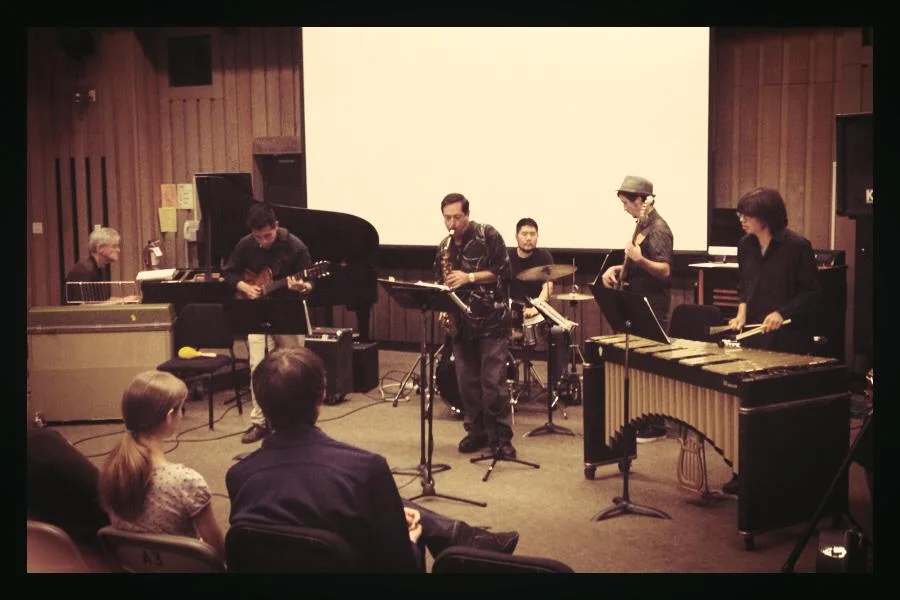What is jazz...? (according to me)
Ten years ago, while sitting in my high school jazz combo class, our teacher posed this question to us students. As expected, our class responded with little more than the wisecracks and smart alecky remarks that surely showed the juvenile humor that was regurgitated daily. And to be perfectly honest, though I took music seriously, I would bet that my answer at the time would have reflected the same indifference and flippancy. My answer, if asked today, would be vastly different as a result of all my musical experiences and would reflect the innate complexity of the genre.
CIRCA 2007
What is the basic definition of jazz? Musicians would more than often bring to light the improvisational aspect of the genre, the element that separates it from the classical or contemporary genres. This creative quality is what makes jazz to be considered “a musician’s music”, since many of the momentary intricacies can only be picked out by a veteran ear. Is improvisation the answer then? In no way would this answer be wrong. Rather, it can be argued that it may be an overly simplistic response to quite a broad question. Consider, if you will, what makes artists like Norah Jones, Jack Johnson, and Jamie Cullum heralds of jazz within the contemporary “pop” genre. There are no improvisational sections nor are there instrumental features within their mainstream compositions. No, it is the sound they capture that ultimately evokes the listener to draw that comparison between the genres.
What is going in this case? Basic chords are made up of three notes played simultaneously. When played together, they either provide a major (happy) sound or a minor (serious) sound. Take a melody and overlay it onto a rhythmic progression of chords---voila, a song is born. Now with the aforementioned artists, they take these chords and extend it beyond just three notes, incorporating harmonic complexity into their compositions. These extensions can create emotional ambiguity, thus giving a cool, mysterious unpredictability to the progression. When used right, a chord alone can sound angelic or sexy or alarming or tense. After establishing these chords as a base, the proposed melody will often follow suit, accenting notes not typically sung in a “pop” inspired line.
Traditional jazz standards have the same philosophy in that they chain complex chords together, while overlaying a melody that follows the harmonic progression. There is much that can be done when incorporating these chords into a composition. For example: a repeated melodic idea over a string of different chords can be beautiful and eye-opening, almost creating a double entendre of meaning as one idea is passed through the prism of two juxtaposing chords. When compared purely from the sonic aspect, these contemporary artists share certain compositional components that are reminiscent of jazz musicians and songs preceding them.
Why jazz? Existing somewhere between a liquid and solid form, jazz occupies a musical realm that is never static, yet there are structural certainties that will always remain stable. Like the tide in the ocean, the ebb and flow of a performance can be predicted, and yet the moment the wave of notes crash into a player's awareness, the shock of the execution is always beautifully unexpected. I live for this rush. The free flow of the art form allows for great amounts of expression while the rules provide a canvas that give the improvised musical strokes meaning and intention. Filling in the harmonic skeleton is the part of the fun---it is this “game-ification” of music that has made me addicted to the genre.
When called upon, a musician can reach into his vast musical experience and construct a single unique melody using any and all of the technical feats in his skill set, filtering it through the sentimental scope of his soul. The twelve notes available to paint this musical picture may seem limiting. Ultimately, it is the heartfelt passion underlying the combination of notes that make the solo a genuinely unique exclamation of personal triumph. This idea has me sold. It is why I always desire to bring this “in the moment” creative mindset to any performance I have.
Life is jazz. Cliché. Cheesy. Unenlightening. All valid reactions to a simple statement. Strangely enough, after years of teaching, I find this idea that “Life is jazz” to be truer and truer. The rules we set for ourselves ensure our success, and the checkpoints we map out ahead are designed to lead us there. Hitting these “chord changes” is part of the fun as we embrace and react to all the spontaneity that we unknowingly encounter each day. The art of life is how to get from one “chord” (checkpoint) to the next, whether it is by nimbly composing a playful melody, or lumbering through some heavy-handed notes. The choices we make to get to that next chord define ourselves as musicians as we play that complex instrument we call life. Some songs will be easy little musical pieces where navigating the checkpoints come as naturally as breathing, while some songs will require thought and preplanning before taking on.
As we keep playing, it gets easier. It becomes second nature. Less thought. But there will always be hiccups: maybe your bandmate screwed up a section of the piece, maybe you did not land on the note that would have been the obviously correct choice, maybe the song is starting to pick up faster than it was supposed to, etc. In the end, it is just jazz. There are no wrong answers. There are no wrong notes. Just poor resolutions. Continue to play and smile it off. Trust me when I say that there is always a consonant solution nearby if you keep an eye and an ear out for it. The positive intention will be conveyed when the performance (and performer) is genuine. It is never good to judge the note misplaced; judge how one picks up the pieces and shows the tenacity to stand his ground when the groove wavers and the foundation starts to give.
What is jazz? Musically, it is a process and a sound---right? It would be unfair to sum up such a regal concept in one sentence. The evolution of the genre from the early 1920s to today has made its definition as fluid as the music itself. It is a certain personal feeling---nostalgia, perhaps---that may end up defining this music. One can latch onto a certain aspect, connect to that which he can relate and with that familiarity, understand what the idea of jazz could mean to his own artistic process and his overall daily perspective. The idea of producing originality in the confines of certain boundaries is an enticing philosophy that could apply to many facets of life. It is very common to find that people live and define their own lives by the rules and expectations set by others before them, hoping to spin their own truths into the melodies they craft against the preset notions of society. That search for and expression of these personal truths, whether in music or in life, can be interpreted as the art of jazz.
--------
Branden Nguyen


